Sunday 12 May 2024
At the Going Down of the Sun
LAHS Member Denis Kenyon shares his experiences as co-founder of the Leicester City, County & Rutland At Risk War Memorials Project.
In the early 2000’s I was photographing war memorials for the Imperial War Museum’s inventory and as I went round various locations it became increasingly obvious that trouble was in store.
Nearly every week brought an announcement of further closures of churches, chapels, working men’s clubs and even factories – most of which had fine memorials. The buildings were scheduled for change of use or not infrequently, demolition. In most circumstances a war memorial was an incumbrance and had to go by one means or another.
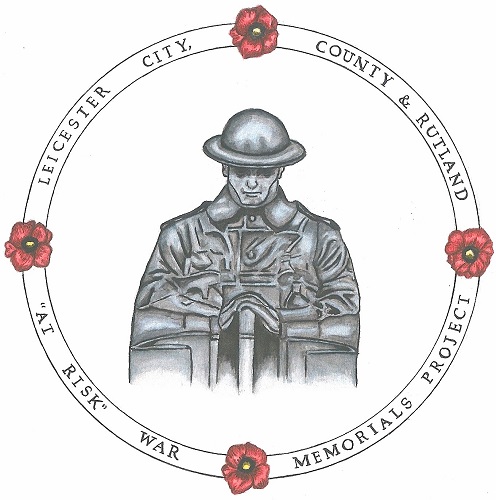
Then by great good fortune, I had the pleasure of meeting Chris Stephens. He was of the same mind, and he possessed an unsurpassed knowledge of an enormous number of memorials both in the city and both counties.
By 2012 with the centenary of The Great War on the horizon, Chris and I decided the time had come to act.
The church which drove us to drastic action was St Saviour’s in the Highfields area. A magnificent George Gilbert Scott cathedral of a building, it had a Memorial Chapel, three WW1 memorial stained-glass windows, wooden WW1 memorial board with 256 names and some 13 other war memorials from both World Wars. These included wall plaques, tall wooden candle sticks, a vellum WW2 Roll of Honour, wooden eagle lectern and so on. A real roll call of men of this large parish killed in two conflicts.

The church had closed in 2006 and was left largely unprotected with no grills over any of the windows – it was asking for trouble.
The big question for us was whether to form a charity. We consulted Voluntary Action Leicester (VAL). They advised strongly against because of the complexities and recommended us to form a not-for-profit Company Limited by Guarantee (CLG), which advice we followed. We have all the disciplines of company law but with the flexibility needed to operate a small start-up successfully. We have never regretted that decision.
We decided to go for broke and after informal discussions with the then National Lottery Fund, submitted a grant application for £70,000, the bulk of which was to replace the stained-glass windows in St Saviour’s with clear glass. The stained-glass memorial windows would then be re-mounted in our newly found premises. These were the deconsecrated chancel of All Saints Church, Highcross Street, Leicester of which building, Chris was the guardian for Churches Conservation Trust. Chris had already taken unilateral action over the years giving room to a few “orphan” war memorials he had come across.
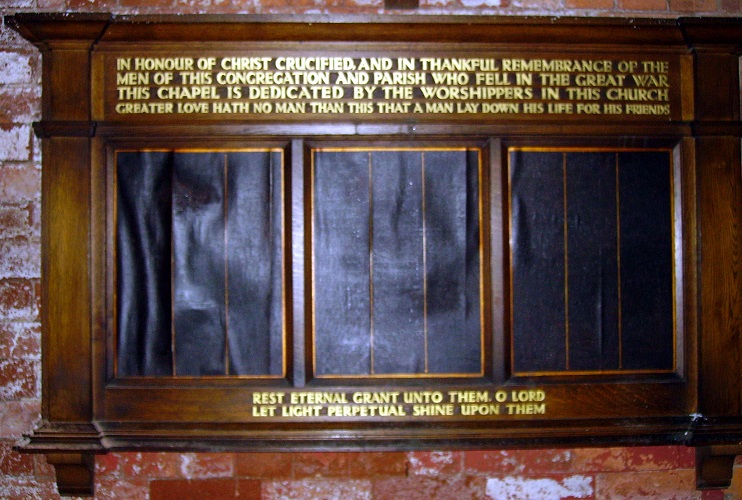
To our total amazement we were awarded this magnificent sum – and then denied permission by City Conservation to remove the stained-glass windows! Needless to say, the inevitable happened and vandals broke in by one of these windows and smashed or stole most of the other 15 war memorials.
However, by this time we had already taken into care more than a dozen other war memorials. We were launched! A core group of supporters was gathered, a logo designed, an attractive leaflet printed, and a somewhat amateur website created. This has subsequently been renewed by a professional web designer paid for by a grant kindly awarded to us by the National Lottery.
Knowing that the memorial stained-glass windows in St Saviour’s would be virtually impossible to view, our solution was back-lit light boxes illuminating good photographs we had taken of the windows, luckily on a sunny day.
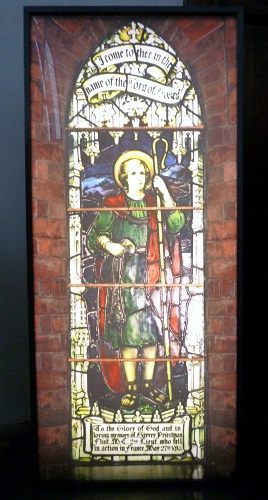
We were of course largely unknown but enthusiastically engaged with many of The Great War Centenary projects which had been set up. This way we met so many people with broadly the same enthusiasms and interests.
Early on in our existence, we were invited to meet Sir Peter Soulsby and his key Arts & Museums and Conservation leaders. This led in late 2018/early 2019 to our being invited, with huge City Museum support, to have our own exhibition “In Memoriam -Leicestershire’s War Memorials At Risk” in The Newarke Houses Museum. A great success with an astounding 4,176 visitors!
We participated in History Cafés and workshops led by Amanda Hanton, the enthusiastic LCC Volunteering and Engagement Team Manager at Snibston. These in turn led us to participate in various small exhibitions in libraries and other public buildings. Slowly more people began to learn of our existence and the flow of information concerning war memorials at risk started to come in.
Heritage events are a great way of telling a wider audience about what we do. We have taken part in three History Fairs at Beaumanor Hall, which were exceedingly well run and also a lot of fun.

Similar events but much smaller have taken place at Wigston and the Adult Education Centre on Belvoir Street and in the University. To our pleasure and amazement, from contacts we have made, we have “signed up” 331 people who have expressed an interest in receiving our newsletter LAST POST which is sent out three or four times a year.
The desecration of the Hart & Levy war memorial started our thinking about what we could do with children. This was one of Leicester’s leading companies manufacturing predominantly men’s clothing in the splendid factory in Wimbledon Street. Many of the men listed on our war memorials will have had the pleasure of wearing their H & L uniforms.

When the company closed in the early 2000s, the war memorial was removed to a shelter in Saffron Hill Cemetery. This proved to be a real draw for local youngsters, with no understanding of the sacrifice these men had made.
All credit to the City Council for having it cleaned up and placed in the Memorial Chapel with limited access.
We stumbled across the splendid charity Warning Zone – Life Skills Centre on Frog Island. They have nine sets of life-like situations, illustrating to young children the potential dangers of everyday living in a really dramatic form. We commissioned a mock war memorial with a TV screen where the metal plaque would be. The opening screen was a graffiti covered memorial, followed by a short but moving film illustrating the hurt which can be caused by thoughtless behaviour and emphasising the need for respect. This was placed in a litter strewn churchyard scene, and we are told has a real impact with children being more aware of the significance of a war memorial. It is not just a list of names. That name was a man who was someone’s husband, father or brother and deserves our respect.
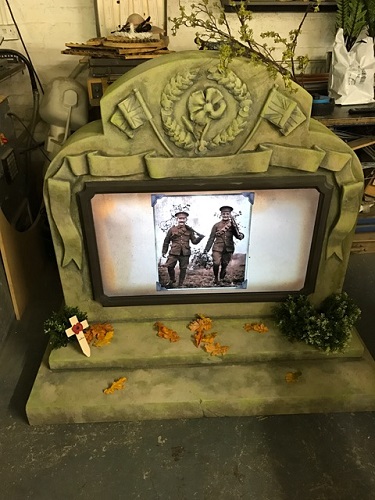
This quest for a higher profile meant that we undertook some quite diverse activities. For example, we led City walks ending up at All Saints. Hi-vis jackets for the leader and two “sheep dogs” bringing up the rear, of a straggling group of some 25 people! We lost no one but gained a most useful helper. A young lady who was so inspired by what she saw of all the memorials, with those thousands of names, that she set to, to write a series of poems on the theme of remembrance. I was so impressed by her spare style, which made one stop and think, that I published them in A5 book form. Over 70 copies have been sold with all proceeds coming to the Project. A real but unintended benefit to all concerned.
In April 2021, the Project received a huge boost. Robin Jenkins, recently retired Chief Archivist at The Record Office, agreed to join us as the third director. This was an enormous relief to Chris Stephens and me, as we are both well on in our 80’s but could now see continuity – always a problem for start-up projects.
The success of the Warning Zone experience encouraged us to develop a programme for schools. We approached Historic England who accepted our offer to be one of their locations in the city with a link to The Great War. For two days in March 2023, we had five sessions a day of about 25/30 pupils per session. We were totally exhausted by the end, but it was worth it. We had excellent feedback from some of the schools and hope that we have made even the smallest impression.
During all this time, illustrated talks were given not only to spread the word but also to bring in a little income, our original grant having been long spent.
Meanwhile, we were taking into care more and more war memorials. Seldom is there much notice. On one occasion we were informed on a Monday evening, that there was a memorial for auction, the coming Friday. We visited the auctioneer, explained who we were and enquired where it would likely end up. We were told the USA. The memorial in question was a massive 11ft. 6ins tall stained-glass window. We could not believe our eyes. It was World War II with the crest of the Leicestershire Regiment, and other national and military symbols. It was from the Aylestone Working Men’s Club on Saffron Lane.

We told Mick the auctioneer, that we thought the memorial was part of Leicester’s heritage and should not be shipped to adorn some Californian beach side mansion. Mick agreed. He said he would ring the vendor and let me know the situation later that night. He was as good as his word.
At 9.00 pm he rang and said the vendor wanted £500 for all his trouble in moving it. We told him we neither buy nor sell war memorials but in this instance it was a case of force-majeure. We gave him the cheque. I am pleased to say that it was never cashed! How we got it to All Saints and on show is another long story.
The frustrating thing is that we could find no information about its installation or the almost certainly, accompanying war memorial. We had our own people on the job and with a research grant from LAHS employed a short-term full timer. Nothing. It is not conceivable that such a piece would be installed without fanfare. Any information will be gratefully received.
Many of the memorials have an exciting tale to tell. For example, the Belgrave Liberal Club memorial was stolen, the metal folded over and when rescued by the scrap metal merchant, an attempt was made to flatten it by JCB!
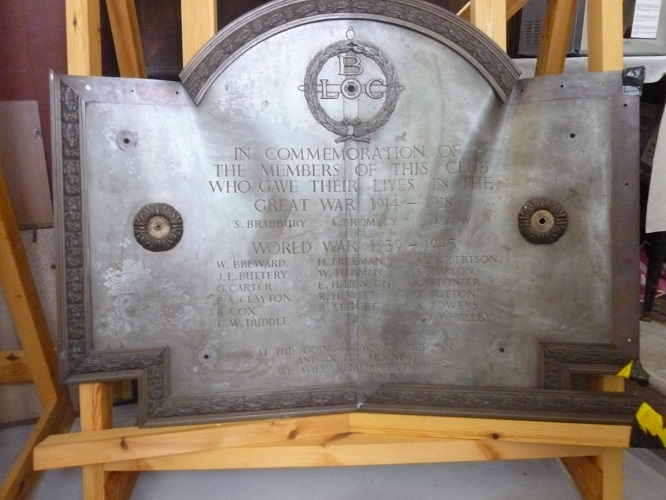
Found broken and wet in a skip was the British United Shoe Machinery Company 1914 Roll of Honour. Some we have recovered from storerooms along with tins of dried paint, all ready to go to the tip.
One of my favourites is a 5ft tall wooden candlestick from St. Saviour’s to Warden Pratt and parishioners who died in the German bombing of Highfields on 19th November 1940, which we recovered from Mablethorpe!
In the case of a memorial shown on Ebay which was spotted by a lady in Worcestershire, LAHS kindly stepped in with an acquisition grant to cover the modest sum involved in securing this Humberstone Road Congregational Church war memorial. This rather plain piece was later joined by the main memorial discovered in Brackley!
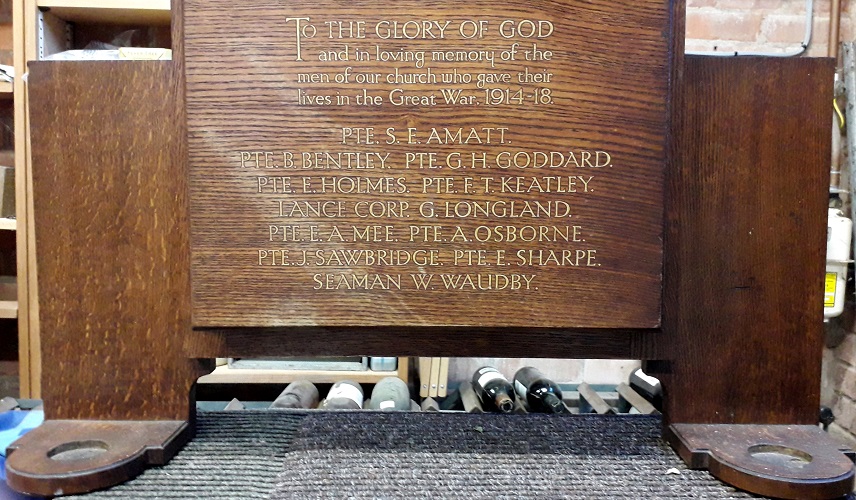
The wooden one clearly illustrates the difficulty of provenance when a memorial is moved from its original location. Most memorials just state “Men of this Parish” or some other such plain phrase. So detective work also plays a part in our task.

To keep up the momentum, we have regular Open Days and participate in Heritage Open Days in September each year. They are usually well attended and are greatly enjoyable, meeting old friends and making new.
Planning for the future has encouraged us to become a member of the Association of Independent Museums (AIM) and plans are afoot to become an accredited museum.
This latter move will happen when our future location is settled. Leicester University, itself a war memorial with the motto “Ut vitam habeant” – “That they may have life”, has been most generous in their support and interest in our future.
Nothing definite has as yet been decided but we are optimistic that our ambitious plans for the long-term future will bear fruit. We would like to be in a position where we can give space to some very significant archives, which we know of, both digital and hard copy and which in due course, will be looking for a home; have research facilities; host talks and operate a significant memorial website. In short, to become a centre of military knowledge, in local terms rivalling Kew.
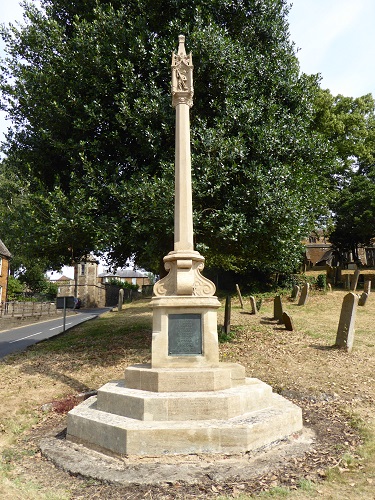
In the early years, when we still had a very healthy bank balance, and with the centenary of the Great War approaching, we also undertook the task of cleaning and restoration of some 16 war memorials in situ. This project we called “Restored to Glory” and whereas, memorials we have taken into care come almost exclusively from the city, these are largely in the small towns and villages of the two counties. As seen in Uppingham and Rifleman Jeremy English’s oak cross restored and moved inside in St Luke’s, Thurnby.
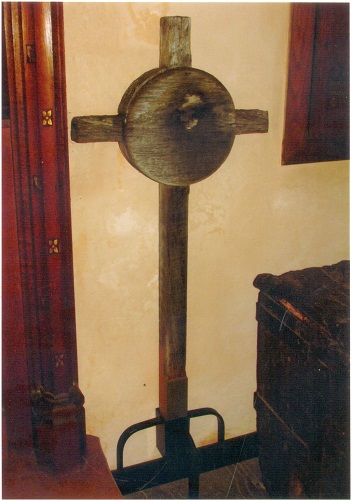
It really has been a most exciting time, and we look forward to many years of useful work, adapting our efforts as circumstances change.
“Let all those who come after, see to it that their names be not forgotten.” King George V
Denis Kenyon, May 2024
Email:-mail@atriskwarmemorials.co.uk
Website:-www.atriskwarmemorials.co.uk
Face Book page:-www.facebook.com/arwmp
Twitter Page:- @ARWMP
Tel:- 07834 324 352
Leicester City, County & Rutland At Risk War Memorials Project Logo. Courtesy ARWMP


